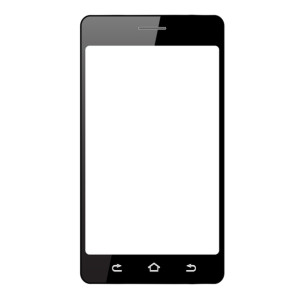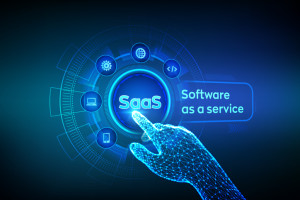5 Reasons Why Live Streaming Video Is Actually Easier Than You Think
Video has a reputation for being difficult. And live streaming video is no different.
After all, it’s a complex topic. I’m an expert, and it still sometimes seems like magic to me. In essence, photons hit a tiny digital sensor and are converted into digital signals. Those signals then pass through cables and via radio waves around the world. And finally, viewing devices reconstruct the original scene for viewers to watch.
As complex as video is, however, live streaming video is becoming simpler all the time. Some incredibly smart people have dedicated their lives to making video accessible. In recent years, this is especially true in terms of on-demand and live streaming video.
As you likely know, broadcast video used to be the exclusive domain of the television networks. Then cable got in on the action. Still, the field was small. For everyday people and small/medium businesses, the only way to broadcast live was to use low-quality public access television. The costs and technical overhead were just too large.
Thanks to advances in streaming media technologies, even total beginners can incorporate live streaming video into their lives and business endeavors. Let’s learn how!
The digital broadcast revolution
The rise of the internet and digital technology has changed so much about our daily lives. Today, more and more users are cutting the cord and turning to streaming services for their entertainment, news, and other needs. And in the video streaming (SVoD) segment, research predicts that number of users will reach 1,371.1 million by 2024.
Smartphones
 Lately, smartphones have driven much of this revolution. First, they’ve led to improved user interfaces. Today, apps must be simple enough that even the eldest generation can use them. This has led to standardization, clean aesthetics, and a push to eliminate technical jargon in favor of plain language.
Lately, smartphones have driven much of this revolution. First, they’ve led to improved user interfaces. Today, apps must be simple enough that even the eldest generation can use them. This has led to standardization, clean aesthetics, and a push to eliminate technical jargon in favor of plain language.
In turn, these changes have filtered into different areas of computing. Ultimately, they make it easier than ever before to navigate complex applications. And that includes the equipment and tools to do live streaming video.
Camera quality
Second, smartphones have led to a massive increase in camera quality. These days, almost everyone carries a camera in their pocket that create great-looking high-definition video footage. Some have even higher resolutions. Features like higher frame rates, 4K video, and improved low-light quality are becoming commonplace.
This change doesn’t directly affect more professional camera users. However, the “push from beneath” has led to a revolution in professional video as well. Costs are falling and features are building up. Often, cheap smartphones introduce new features before professional camera manufacturers. This allows a laboratory of millions of users to test and refine these technologies. Users can then retool such technologies, and later include them in pro-grade equipment. As a result, more demanding pro users reap the benefits of a more stable, capable platform.
Bandwidth
The final element in the digital broadcast revolution relates to bandwidth. Internet speeds are faster than ever before. The average internet user in the United States has a downstream bandwidth index that’s more than 20 times faster than a DSL connection. Likewise, the world’s total internet users surpassed 4.57 billion in 2020. This means that well over 59% of the total world popular is now online.
With all that bandwidth on the market, people nowadays can do a lot more with video. Live streaming video in high-definition is becoming the norm. Moreover, 4K broadcasting is just around the corner. With speed comes to power. Whatever your goal may be, streaming can help you reach it. We’ve seen live video successfully used for:
 Business training
Business training- Open-access government and corporate meetings
- News media
- Sporting events
- Conferences and workshops
- Live music
- Religious services
- Civic events and holidays
- Plays and theater events
In all these cases, people didn’t start with expert knowledge of how to stream. Live streaming video online is a new technology with adaptations to fit a multitude of different situations. In each case, you’ll need to tweak things for your unique situation. However, the basics are really quite simple, no matter what you plan to broadcast live!
Now, let’s review 5 key reasons why live streaming video is actually easier than you think.
1. You don’t need to be a computer engineer to start live streaming video
At it’s simplest, live streaming is a push-button operation. Apps make it this simple.
Increasingly, professional live streaming platforms are easy to use as well. Setting up a live stream can take as little as five minutes. Even if you’re a non-experienced user, the basics are quite simple:
- Connect your camera to your computer or hardware encoder. Usually, this is as simple as connecting a cable and selecting the right option in a drop-down menu.
- Create a new live channel via your video host web interface. In a few clicks, you’ll create a new online home for your live stream. This is the place where you can name the stream and write a short description. Use the included embed codes and links to stream live video on your website, social media channels, and anywhere else you want.
- Connect your computer or hardware encoder to the live streaming service provider servers. This step is simple, too. Just enter a URL, stream name, and password within your encoder. The video host will provide this info when you create a new live channel.
- Choose video compression settings. This will be based on your bandwidth and camera quality. Check out this article for more details on this process. It’s easier than you think!
- Start streaming! Roll the cameras, start your event, and click the “start” button on your video host web interface. You’ll be ready to go in no time!
This may still seem complex but worry not. Check out item five on this list for a little reassurance! Before we get there, however, let’s talk a bit more about how live streaming has transitioned into the mainstream.
2. Free apps and platforms are driving live streaming video into the mainstream
Millions of people are live streaming video every day using their smartphones. This occurs mostly through free apps like Periscope and Facebook Live. These platforms are great in a lot of ways. They’re free, for one thing. They allow people to instantly start broadcasting. They also enable wire-free streaming from a single, handheld device.
 It’s no wonder, then, that these apps have become so popular.
It’s no wonder, then, that these apps have become so popular.
This is reflected when it comes to desktop-based live streaming apps. YouTube and other free live streaming platforms allow anyone to broadcast from a webcam. It’s fast and easy.
However, there are several considerable drawbacks to free services, as compared to professional live streaming and on-demand online video platforms. First, they don’t allow you to control content. They’re also branded to promote their own business. Embedding can cause issues. Calls-to-action are poorly integrated. Making money off your live streams is complex and often impossible. And we could go on.
These limitations notwithstanding, free apps and platforms are helping the public to get used to the idea of broadcasting (and watching) video in real-time. They’re helping a niche industry come to everyone’s pocket and it’s reshaping broadcasting as a whole.
3. The SaaS business model makes it simple and risk-free to start streaming
Apps are great, don’t get me wrong. But free only goes so far. Features are the real bread and butter of live streaming solutions. Apps like YouTube and Facebook just don’t cut it in a professional context. They’ll often be blocked and even when they’re not, they don’t give the right impression.
More demanding users usually want a pro-grade video hosting and live streaming service. These providers offer features that are valuable to power users, such as:
- White-label service (insert your own branding)
- Monetization (via pay-per-view, subscriptions, or advertising)
- Security (restrictions via passwords, IP fencing, tokenized access, and so on)
- Licensing (support for geographic limitations, Digital Rights Management [DRM], and anti-piracy measures)
- Embedding (host content solely on your website)
- Tech support (24/7 hotline for issues)
Fortunately, there are a number of high-quality live streaming solutions available. Anyone can look at the options and assess their needs to get started.
SaaS Business Model
Live video hosts operate on a SaaS (Software as a Service, or as we like to call it here at Dacast, Streaming as a Service) business model. Essentially, we provide the infrastructure, the software, and the technical expertise to make it all work. Users pay a simple monthly fee (or bandwidth-based event fee) to access this.
 This model minimizes risks and maximizes benefits. Users get the security of a time-tested, highly developed infrastructure. A CDN (Content Delivery Network) ensures that their viewers get the best experience, with minimal lagging and buffering. Technical support staff is available as well. Best of all, all this comes at an affordable price. It’s a viable alternative to the old way, which required a huge budget and staffing to build a system like this on your own.
This model minimizes risks and maximizes benefits. Users get the security of a time-tested, highly developed infrastructure. A CDN (Content Delivery Network) ensures that their viewers get the best experience, with minimal lagging and buffering. Technical support staff is available as well. Best of all, all this comes at an affordable price. It’s a viable alternative to the old way, which required a huge budget and staffing to build a system like this on your own.
Providers love this model, too. Monthly customers lead to clear, reliable income streams. That money can be reinvested in better support and equipment to make the system better. It’s a clear value-added service that everyone can be proud of.
4. You already have the equipment you need to start live streaming video
Do you have a computer?
If yes, then you already have everything you need to get started with live streaming video.
These days, even budget laptops feature high-definition webcams and built-in microphones. Between that and free encoding software (like Open Broadcaster Software), you’ve got everything you need to begin live streaming.
Even if you do need to invest in equipment, it’s pretty darn easy to get started.
Cameras have different outputs. The cheapest and most simplistic cameras use USB output to connect to your computer. This has the advantage of the ease of use, but the quality is lower. A more functional option is to use an HDMI-capable camera. This will have to connect to a video capture card or dongle connected to your computer.
Professional video cameras may export video via SDI. This connector can deliver higher bit rates and connect to the best quality equipment. Some capture cards and dongles support SDI. Alternatively, you can use a hardware encoder with dedicated USB, HDMI, or SDI inputs.
Of course, this pro-grade equipment is completely optional. The affordable and easy option is to get started with what you already have and build up from there. Professional gear review site The Wirecutter put it well: “all cameras are good cameras.”
5. Set it and forget it
This is a big one.
When we’re asked how live streaming solutions can be so easy, this is one that we’ll reference again and again.
Simply put, live streaming video allows you to “set it and forget it.”
 Once you’ve entered the correct settings, you can keep using them more or less forever. As long as the system stays the same, everything should keep working. Invest a lot of time initially to ensure everything is running smoothly.
Once you’ve entered the correct settings, you can keep using them more or less forever. As long as the system stays the same, everything should keep working. Invest a lot of time initially to ensure everything is running smoothly.
Connect your cameras, computer or encoder, and other elements of the system. Plug in your chosen settings for bandwidth. Then, connect your system to the video host servers. Next, double and triple check every setting, making sure everything is working well in both hardware and software.
We recommend that you test, test again, and then retest a third time. You don’t want any issues arising in the middle of an important broadcast.
Then, just keep it rolling. After this initial investment of time and energy, the system should be rock solid. As long as the various elements of your system don’t change, you can keep using your initial settings for each and every broadcast. You can even do continuous 24/7 live broadcasting this way!
Conclusion: Don’t be intimidated!
Many people feel intimidated when it comes to technical topics. Live streaming is no different. When you’re looking at the complexity of a system like this, it can be hard to know where to start. I hope this article has demonstrated that you don’t have to be intimidated. Getting started with live streaming really is simple. With just a bit of knowledge and some basic pieces of equipment, you can jump right in. And if you have issues, tech support can help you sort it out. The five reasons discussed above underscore that even total beginners can have success with live streaming.
Are you considering using pro streaming solutions for the first time? Have you been using the technology already? Let us know in the comments! We love to hear from our readers, and we’ll do our best to respond to every response. And for exclusive offers and live streaming tips, you can join our LinkedIn group.
And if you’re not yet streaming with Dacast, now’s the time to give our streaming solutions a try! Just click the button below to sign up for our 14-day free trial (no credit card required).
As always, thanks for reading
 Stream
Stream Connect
Connect Manage
Manage Measure
Measure Events
Events Business
Business Organizations
Organizations Entertainment and Media
Entertainment and Media API
API Tools
Tools Learning Center
Learning Center Support
Support Support Articles
Support Articles
 Business training
Business training